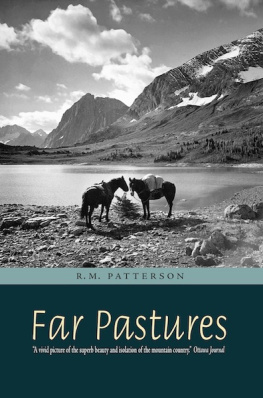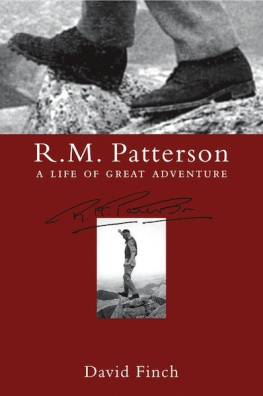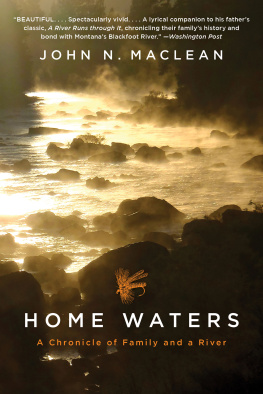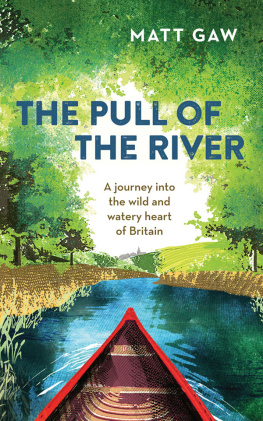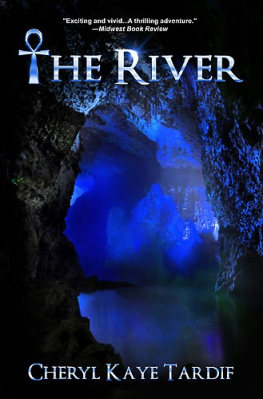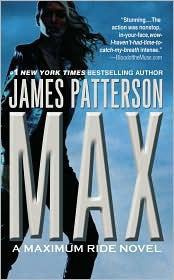1
The Legend
To the West, low down and dimly seen, were the twin ranges of the Mimbresthose mountains of gold whose desert passes rarely echo the tread of human foot. Even the reckless trapper turns aside when he approaches that unknown land that stretches northward from the Gila; the land of the Apache and the fierce Navajo.
The Scalp Hunters, MAYNE REID
EVEN FOULLER THAN USUAL, so much so that it became almost a duty to stay indoors and try to forget the fog and the soot-laden sleet and the rain. So I came back from the City on this particular afternoon by way of Harrods and picked out a book from the library there; then I took myself home to a blazing fire and a deep armchairand the noises of London faded and I found myself back in the wilderness, following a strange, new trail.
The book was Michael H. Masons The Arctic Forests. There were a couple of maps in the back of ita physical map of Alaska, the Yukon Territory and the Mackenzie River valley, and a coloured ethnographical chart of the same area. The YukonMackenzie divide, land of my boyhood dreams, was shown as a dotted line, named (inaccurately) Rocky Mountains and running vaguely between the heads of dotted rivers, themselves vague and their courses only guessed, north to the Arctic Ocean. Reaching up into the southern portion of these so-called Rockies, and rising near the heads of the Pelly, which are the furthest heads of the Yukon, there was a river. It was (inaccurately) shown to be a straight line and it had a couple of tributaries; it seemed to be about two hundred and fifty miles long, and it ran southeastwards into the Liard, which, itself, is the West Fork of the great Mackenzie. The river led into the country that I had always wanted to see (or seemed to lead there, for how was I to know that it was only on the map at all from the reports of Indians and prospectors?), and its name was the South Nahanni.
The ethnographical chart placed the South Nahanni in a large, beige-coloured area that ran all the way from the Wind River in the Yukon to the heads of the Sikanni Chief in British Columbia. The word Nahanni was written large over this area; a section of Masons book was devoted to The People of the Arctic Forests, and I turned the pages, looking for this unfamiliar name. There it was: Nahanni (people of the west) it ran. They are a hardy, virile people, but have suffered much from white influence. They are hostile to strangers, and many white pioneers have been done to death by them. This tribe was for many years under the complete domination of one woman, supposed to be partly of European descent.
That was interesting; and it would be fairly easy, I could see, to reach the South Nahanni: all I would have to do would be to throw a canoe into the Peace River and follow the water down northdown the Peace and the Slave and through Great Slave Lake to the Mackenzie. Then, at Fort Simpson, one would turn up the Liard to the mouth of the South Nahanni, and from there northwest into the lonely mountain country of the Yukon divide, the land of the wild white sheep. Sometime soon I would do that, I decidedand strangely enough I never doubted that I could, though exactly what I proposed to use in place of experience has since often puzzled me. I was extremely accurate with a punt pole and could place a punt where I wanted it to an inch, but the art of handling a canoe had been acquired entirely on the Cherwell and the Isisa very gentle school of rivercraft.
I turned again to the maps. I could probably sell the canoe in the fall at one of the fur-trading posts in the Sikanni Chief country and walk south, carrying a pack, the two hundred miles or so to Fort St. John on the Peacethere must be some kind of a trail. That would be some time in October, but it would still not be too late to build a raft and float or sail down the two hundred miles of river between Fort St. John and Peace River Crossing, even if I landed in there with the river running ice. And that would close the circle and bring me back to my starting point; I could either ride north from there on the old Fort Vermilion trail to my homestead, or catch the train south to Edmonton, whichever seemed to be the thing to do.
I had had a run of luck lately, and I could afford to make this journey this very summer if I wished. My Alberta homestead would be safe; my nearest neighbour would keep an eye on it for me, and the horses could run out on the range. I began to measure distances on the map: tomorrow I would go to Canada House and see what, if anything, they could tell me about the Nahanni.
Late July found me poling a sixteen-foot canoe up a mile-wide river. The sun blazed down out of a cloudless sky and it was hot and stilla hundred in the shade at the very least. The brown, swirling flood glittered and flashed in the bright light of the noonday sun: it seemed to come from a bell-shaped mountain that rose in the west out of the flatlands of the forest country. From this mountain a steep, scarped range stretched away to the north and faded from view; to the south of it there was nothing, and no foothills could be seen to east or west of it. The range had been coming closer for several days now: it seemed to quiver in the heat of that blazing noonday, and deep blue shadows were already lengthening on its eastern face. It gave promise of clear springs and icy streamlets full of trout, clean gravel beaches and cool nights, and I urged the canoe towards it, longing to be clear of this mosquito-ridden plain.

The Nahanni Range and Nahanni Butte from the Liard.
The big, brown, swift-flowing river was the Liardthe Rivire aux Liards or the Courant Fort of the old voyageurs, the West Branch of the Mackenzie. The mountain was Nahanni Butte, and northward from it ran the Nahanni Range. But I did not know those names then and there was no map to show them to me: all I knew was that the mouth of the South Nahanni, where it met the Liard, lay just beyond the bell-shaped mountain: there was a trading post there, I had been told in Fort Simpson, but it would not be occupied. There was an Indian village, too, they had said, but it would be deserted also; all the Indians would be away up to Fort Liard for treaty money and supplies. And that, I thought, bearing in mind the description of these Indians in Masons book, was all to the good.
I had heard a thing or two by now about this strange river with the beautiful name. Hundreds of miles away, at Fort Smith on the Slave River, someone had heard that I was headed for the South Nahanni.
So youre going up the Big Nahanni? Boy, youve bitten off something this time! They say theres canyons in there thousands of feet deep, and the water coming through fastern hell.
But people have got through, havent they?
Oh, I guess they have just got throughyears ago. But canyonsand sheer! Thousands of feet!
If people have got through, there must surely be some ledges or something where a man can tie a canoe and camp and sleep?
I dont know. There aint many that have come back to tell about it. Men vanish in that country. There was some prospectors murdered in there not so long ago, and down the river they say its a damned good country to keep clear of
, his name was; hed been trapping on Beaver River near the outlet of the Great Slave and now hed got the Nahanni bug into his head. Red Pant, the Indians called him because he always wore great, heavy work pants of scarlet stroud. Hed pulled out with his canoe just a couple of days ago, and with them red pants on him a blind man couldnt miss him
I had seen Faille, a day or two later, at Wrigley Harbour, a little bay on an island where the Mackenzie spills out of the Great Slave Lake. There he was, a small, red-trousered figure on the distant shore. I had got my canoe and camp stuff loaded up on the scows of a mining outfit that was going downriver, and we waved to Faille and passed by without stopping.


